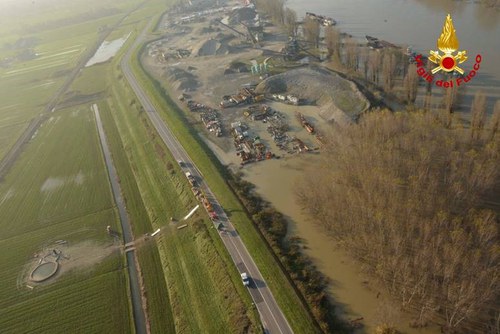In the lecture various failure mechanism for dikes will be shown with examples, a bit more attention will be given to slip circle failure. It will be shown that some aspects of dike failure cannot be calculated with just slip circle calculations, but that very wet and very dry conditions may lead to instability.
The main part of the lecture will be on backward erosion piping. In Italy, USA and the Netherlands, this is identified as the most critical failure mechanism for levees and dikes, partly because of the uncertainties in the calculation methods. Examples from piping will be shown. The calculation methods available (Bligh, Sellmeijer, Blanket theory) will be described briefly and especially the difference in assumed boundary conditions will be explained.
Some results will be shown from recent piping research. As an example some simple calculations will be made for the Po river levee near Boretto. Why piping occurs and what are possible mitigating measures.
CURRICULUM VITAE – Adam Bezuijen
Key qualifications
Prof. Dr. Adam Bezuijen is professor in soil mechanics and foundation engineering at Ghent University and senior specialist at Deltares. At Deltares he is member of the scientific council.
He is an expert on physical modelling (both 1-g and n-g) and tunnelling. At the moment he is chairman of the ISSMGE TC 204 on underground construction in soft soil and member of ISSMGE TC 104 on physical modelling.
He was involved in research on backward erosion piping in the Netherlands and Belgium. He supervised PhD research in both countries and was involved in 1g and ng model tests on backward erosion piping.
He contributed to a significant number of centrifuge tests as project leader and project supervisor. Tests include: skirt penetration tests for offshore foundations, pile-tunnel interaction, ship impact tests to test coastal or offshore protection of bridge pillars, slope stability tests above and below the water line.
Furthermore, he was involved in research on tunnels, dikes, foundations, geotextiles, block revetments and dredging (breaching, suction and jetting). Most of his research work focuses on the interaction between soil and water.
He is (co-)author of more than 20 journal papers and more than 100 conference proceedings. He was awarded by the USACE (US-Army Corps of Engineers) for his work in the fact finding after the Katrina disaster. He received in 2104 an IGS award for his work on piled embankments.
Academic Degrees
2010, PhD Civil Engineering, Delft University
Thesis : Compensation grouting in sand, experiments, field experiences and mechanisms ; Promotors : Prof. A.F. Van Tol/Prof. J.W. Bosch .
1981, M.Sc. Applied Physics, Delft University
Positions
- 1981-1984 Project leader Laboratory of Soil Mechanics – Delft
- 1984-1991 Project specialist Soil Mechanics Delft
- 1991-1995 (Sen.) Consultant - GeoDelft
- 1991- 2012 Scientific Coördinator Centrifuge - GeoDelft
- 2006-2008 Member of the Scientific board - GeoDelft
- 2012- present Senior advisor – Deltares
- 2012 Professor Ghent University (head of the Laboratory of Geotechnics)
Selected Professional Activities
- 2000-2010 Chairman CEN/TC 189 “Geosynthetics”
- 2003-2010 Core Member TC 28 ISSMGE
- 2006-2010 Member TC 2 ISSMGE
- 2010-2011 Vice chair TC 204 ISSMGE
- 2006-present Editorial board Geokunst
- 2010-2014 Task Group leader TC 104 ISSMGE
- 2011- present Chairman TC 204 ISSMGE
